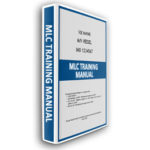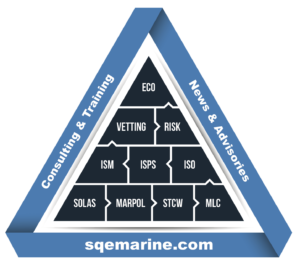Overview
AMSA issued Marine Notice 5/2022 to announce that a new Focused Inspection Campaign (FIC) on hours of work and rest has commenced from 01 May 2022, valid up to 30 June 2022. AMSA surveyors will undertake the FIC in conjunction with regular port or flag State control inspections. Any port State control deficiencies will be reported to regional port State control databases.
AMSA encourages ship owners and masters to familiarize themselves with the requirements of the Maritime Labour Convention 2006 (MLC) and the International Convention on Standards of Training, Certification and Watchkeeping for Seafarers (STCW), Australian Marine Orders 11 and 28 and their respective safety management system (SMS).
Aim of FIC
The purpose of the focused inspection campaign is to determine:
- the level of compliance with the maximum hours of work or minimum hours of rest for seafarers in accordance with the requirements of International Conventions, and
- the familiarity of the master and officers with the implementation of provisions when working onboard ships.
Questionnaire
As part of the Focused Inspection Campaign, AMSA PSCOs will be using a checklist (Appendix A) during ship inspections.
Actions required
Ship managers and Masters should be prepared to address related FIC items to ensure compliance with MLC, which is a key implementation item for AMSA’s PSCOs.
How we may help
SQEMARINE can provide guidance for questionnaire and a best practice guide for compliance (Appendix B). Additionally through the RiSK4SEA platform, an analysis on AMSA findings on Deficiency Category is available (Appendix C).
See also our related products
Appendix A: Focused Inspection Questionnaire (as per Marine Notice 5/2022)
| No. | Description | Yes | No | N/A |
| 1. | Is a table of shipboard working arrangements posted for seafarers accessible? | |||
| 2. | Does the table of shipboard working arrangements ensure that the first watch at the commencement of the voyage and subsequent relieving watches are sufficiently rested and otherwise fit for duty? | |||
| 3. | Do records of the daily hours of work or rest show compliance with the actual hours of work and rest hours, including the requirements for rest breaks? | |||
| 4. | Do any seafarers have periods of shipboard employment exceeding 11 months? | |||
| 5. | Has adequate compensatory rest been given to seafarers who have had their rest disturbed by call-outs to work? (e.g. such as when a machinery space is unattended) | |||
| 6. | Has the master suspended the schedule of hours of work or hours of rest, with in the last 3 months, and required any seafarer to perform any hours of work necessary until the normal situation has been restored? | |||
| 7. | Have musters, fire-fighting and lifeboat drills, and drills prescribed by national laws and regulations and by international instruments, been conducted in a manner that minimizes the disturbance of rest periods and does not induce fatigue? | |||
| 8. | Where non-compliance with the work and rest hours has been recorded, has the Safety Management System corrective action process (ISMC 9) been used to rectify non-conformance by determining the cause and preventing recurrence? |
Appendix B: Best Practice Guidance on FIC Questionnaire
1. Is a table of shipboard working arrangements posted for seafarers accessible?
A duty table and working arrangements for all duty positions on board should be completed and posted on crew areas (mess, recreational rooms, alleyways, Galley) and key positions (Bridge/Engine room). The document should include duty position/ duty time (from / to) / Name and rank. This may be divided into sea period and/or port period. It is highly recommended to use differed tables for sea period and port period as duties during port stay may change depending on cargo (or other) operations.
2. Does the table of shipboard working arrangements ensure that the first watch at the commencement of the voyage and subsequent relieving watches are sufficiently rested and otherwise fit for duty?
The table of shipboard arrangements has to be reviewed by Chief Officer (for Deck department) and Chief Engineer (for Engine department) in order to reflect the current status of duties, in conjunction with the hours of work and rest of relevant personnel. A mistake that head of departments on board often make, is to have one table for all voyage or port stay, without taking into consideration additional duties or works. Specifically for the first watch at the commencement of any voyage, personnel on duty should be adequately rested and fit for watch.
3. Do records of the daily hours of work or rest show compliance with the actual hours of work and rest hours, including the requirements for rest breaks?
A formal document should be in place for every seafarer on board to mark the hours of work and rest. Company may use the relevant Flag Administration’s format, or develop a similar, including all related information. Most common finding is the record of working and rest hours to not agree with other documents (eg Bridge Log or Engine room log). This is because a seafarer may have checked a specific hour as rest hour but in the same time he/she had signed a log as the officer on duty.
Another common finding of non compliance is the record of drills not to be in accordance with the hours of work and rest document for each seafarer. This may indicate that the seafarer had a rest hour but at the same time in the log, this was marked as a conducted drill with the seafarer being one of the participants. Some Companies use an electronic system for work and rest hours compliance which may provide discrepancies for daily or 7 day period. These discrepancies should be immediately addressed and seafarers should be provided with adequate rest period accordingly.
4. Do any seafarers have periods of shipboard employment exceeding 11 months?
In accordance with MLC (Reg. 2.4 Standard A2.4), each seafarer should be provided with 2.5 days of paid leave for each month of contract (but not less than 30 days). On this basis, when a complaint is received during a more detailed inspection, AMSA inspectors will verify compliance with Regulation 2.4, ensuring seafarers serve no longer than 11 months continuously on board a vessel. This will include verification that any service extensions do not result in seafarers serving on board for more than 11 months.
Where inspectors identify that a seafarer has served on board a vessel for more than 11 months, but less than 13 months, and this occurred with the full consent of the seafarer and in accordance with any flag State requirements, the non-compliance will be brought to the attention of the master and the vessel owner, with an expectation that the non-compliance will be rectified at the earliest possible opportunity. Due consideration to flag States policy in this regard may be taken into account.
Where inspectors identify that a seafarer has served on board a vessel for more than 13 months, or in cases of systemic breaches, the non-compliance will be managed in accordance with MLC, 2006 Standard A5.2.1.6. This requires the inspector to ensure that the ship shall not leave the port unless all non-conformities have been rectified, or unless the inspector has accepted a plan of action to rectify such non-conformities and is acknowledged that the plan will be implemented in an expeditious manner.
5. Has adequate compensatory rest been given to seafarers who have had their rest disturbed by call-outs to work? (e.g. such as when a machinery space is unattended)
Any disturbance of normal rest hours should be compensatory rectified under Master’s obligation. Heads of departments (Chief Officer and Chief Engineer) should be very cautious on rest hours deviation and the reason such a deviation should occur. In case of additional work during rest hours, the seafarer should be adequately rested prior resume duties.
6. Has the master suspended the schedule of hours of work or hours of rest, with in the last 3 months, and required any seafarer to perform any hours of work necessary until the normal situation has been restored?
Master may suspend the schedule of work hours and hours of rest in situations of vessels distress and require a seafarer to perform necessary duties until normal conditions are restored. However, this can not be the case repeatedly. Additionally, as soon as practicable after the normal situation has been restored, Master should ensure that seafarers who have performed work in a scheduled rest period, are provided with adequate period of rest.
7. Have musters, fire-fighting and lifeboat drills, and drills prescribed by national laws and regulations and by international instruments, been conducted in a manner that minimizes the disturbance of rest periods and does not induce fatigue?
An annual drill plan is highly recommended to be posted. Drills and musters for training are scheduled tasks and can be scheduled in such order as not to disrupt the rest hours of the crew. Apart of the drills (during which the presence of all crew is required), training sessions and meetings may be scheduled to be conducted during different periods with different participants in order to conform with the rest hours of the crew. However this is not an easy task.
Taking for example a typical ocean going vessel, the following should be scheduled annually:
- Fire drills (one per month) – 12
- Abandon Ship Drills (one per month) – 12
- Rescue from enclosed space (one every 2 months) – 6
- Lifeboat lowering (every 3 months) – 4
- SOPEP drills (every 3 months) – 4
- Security drills (every 3 months) – 4
- Safety meeting (every month) – 12
- Training sessions for several emergencies or safety issues (commonly one per week) – 48
All the above give a sum of 98 tasks to be scheduled during a year period (365 days). Taking into consideration the port periods and cargo related time requirements, almost each day during voyage, there is an extra task to be performed other than normal duties. In this case, some drills or training sessions may be conducted simultaneously (eg a fire case to lead to ship abandonment while lowering a boat). However if there is no annual schedule, there may be a time that the requirements from regulations will not be covered and ship/Company may be exposed against third parties (PSC, Flag Administration, charters etc)
8. Where non-compliance with the work and rest hours has been recorded, has the Safety Management System corrective action process (ISMC 9) been used to rectify non-conformance by determining the cause and preventing recurrence?
As per all deviations from normal implementation of the rules and Safety Management System, all no conformities should be documented and followed up by responsible personnel on board and ashore. A good practice to follow is to create a KPI for # of crew work % Rest hours violations (same is a DryBMS requirement). In this way, Company will set a target each year and all violations will be reported, addressed (with corrective actions), followed up (fleet distribution) and reviewed (during Management review)..
Appendix C: AMSA Deficiencies on FIC items (Last 5 Years) (Source RiSK4SEA)
Deficiency Codes Related to FIC
| Item | Question | Related PSC codes |
| 1 | Is a table of shipboard working arrangements posted for seafarers accessible? | 01306 – Shipboard working arrangements 01307 – Maximum hours of work or minimum hours of rest 01308 – Records of seafarers’ daily hours of work or rest |
| 2 | Does the table of shipboard working arrangements ensure that the first watch at the commencement of the voyage and subsequent relieving watches are sufficiently rested and otherwise fit for duty? | 01306 – Shipboard working arrangements 01307 – Maximum hours of work or minimum hours of rest 01308 – Records of seafarers’ daily hours of work or rest 09234 – Night Working for seafarer under the age of 18 09235 – Fitness for duty – work and rest hours 18201 – Work and rest hours |
| 3 | Do records of the daily hours of work or rest show compliance with the actual hours of work and rest hours, including the requirements for rest breaks? | 01307 – Maximum hours of work or minimum hours of rest 01308 – Records of seafarers’ daily hours of work or rest 09234 – Night Working for seafarer under the age of 18 09235 – Fitness for duty – work and rest hours 18201 – Work and rest hours |
| 4 | Do any seafarers have periods of shipboard employment exceeding 11 months? | 01220 – Seafarers’ employment agreement (SEA) 01221 – Record of employment |
| 5 | Has adequate compensatory rest been given to seafarers who have had their rest disturbed by call-outs to work? (e.g. such as when a machinery space is unattended) | 01307 – Maximum hours of work or minimum hours of rest 01308 – Records of seafarers’ daily hours of work or rest 09234 – Night Working for seafarer under the age of 18 09235 – Fitness for duty – work and rest hours |
| 6 | Has the master suspended the schedule of hours of work or hours of rest, with in the last 3 months, and required any seafarer to perform any hours of work necessary until the normal situation has been restored? | 01307 – Maximum hours of work or minimum hours of rest 01308 – Records of seafarers’ daily hours of work or rest 09234 – Night Working for seafarer under the age of 18 09235 – Fitness for duty – work and rest hours 15104 – Masters responsibility and authority |
| 7 | Have musters, fire-fighting and lifeboat drills, and drills prescribed by national laws and regulations and by international instruments, been conducted in a manner that minimizes the disturbance of rest periods and does not induce fatigue? | 01306 – Shipboard working arrangements 01307 – Maximum hours of work or minimum hours of rest 01308 – Records of seafarers’ daily hours of work or rest 09234 – Night Working for seafarer under the age of 18 09235 – Fitness for duty – work and rest hours 18201 – Work and rest hours |
| 8 |
Where non-compliance with the work and rest hours has been recorded, has the Safety Management System corrective action process (ISMC 9) been used to rectify non-conformance by determining the cause and preventing recurrence? | 15108 – Reports of non-conf., accidents & hazardous occur. |





